#Planetary colonization
Explore tagged Tumblr posts
Text
Elon Musk is in the White House, while Trump is going to make a Space Force.
Alpha Centauri A/B: The main stars of the Trinary Alpha Centauri. Much more robust than Proxima.
Barnard's Star: Currently about 6ly away. In 10,000 years, it will be 3.5 ly away, making it the closest star to our beloved Sol. This means it will be the only star that will become easier and easier to colonize. Unfortunately, it's a Red Dwarf, so not the most useful for colonization. Great for a branch-off civilization.
Epsilon Eridani: One of the closest stars, home of either Babylon 5, Halo's Reach, and Vulcan, (TOS until mid TNG era).
Galilean Moons: The largest moons of Jupiter: Io, Europa, Ganymede, and Callisto. They were the first sign that the heavens contained things that did not revolve around our beloved Terra. Also includes the best candidates for life. Their proximity to each other would mean they could support each other, rather than running all of the way to another stellar system.
Mars: Classic colony. Has a similar day length. Has other requirements for life, i.e. water. Has other metals. We'd need to dig under the ground, and crash a few asteroids for water, but is probably the easiest planet to colonize.
Planet X: Hypothetical tenth planet that pops up every now and again. We no longer have 9 planets, so now it's just X=Unknown/Variable. The current best theory is the Kuiper Cliff. Our stellar system formation models would have more objects passed 40AU, but the Kuiper Belt ends at around 40AU. A planet 70% of the mass of Terra would make mathematical sense with an elliptical orbit of 100-200AU. Alternatively, watch Wish Upon the Pleiades. Great show.
Procyon: Home of the Andorians, and likely the name sake of Kyon from The Melancholy of Haruhi Suzumiya.
Proxima Centauri: The closest start to our Sol, but also a tiny little bastard. A lot of Sci-Fi correctly portrays it as a great stopping off point for further galactic exploration.
Sirius: Because shiny dog star.
Tau Ceti: The closest metal-rich star, which would make it the most useful for long-term habitation.
Venus: Apparently Earth's atmosphere would float above all of the acid clouds and insane temperatures, to a roughly Florida temperatures.
Wolf 359: Because we want to stop the Borg, (or at least put up a respectable fight).
Notes: First colony. While there are plans for the Moon, that's more of a staging base for further projects.
2 notes
·
View notes
Text
Randy’s Collection of space warships
The Evolution of Sky and Space Travel: A Journey Through Time and Space Introduction Since the dawn of human civilization, the desire to explore beyond the familiar horizons has been an intrinsic part of human nature. Initially confined to terrestrial domains, humans have always been fascinated by the skies and stars, seeking to unravel their mysteries. This fascination evolved into tangible…
#aeronautics#alien archaeology#alien contact#alien encounters#alien mysteries#ancient alien theory#ancient civilizations#Apollo missions#astrobiology#astronautics#astrophysics#aviation history#cryogenic sleep#deep space exploration#Elon Musk#ethical space exploration#extraterrestrial intelligence#extraterrestrial life#flight evolution#future of humanity#future of space#human evolution#intergalactic travel#interstellar travel#Mars colonization#Mars exploration#moon landing#mythology of flight#NASA#planetary colonization
0 notes
Text
Mars photo shows the Red Planet from above in "true" color for the first time ever
This view is about 1,550 miles above the Valles Marineris canyon system, revealing an enhanced view of Mars without its polar caps, thanks to the relatively low altitude.

#mars planet#water on mars#mars colonization#life on mars#mars#planet mars#solar system#astronomy#nasa#astronomers#universe#nasa photos#astrophotography#outer space#astrophysics#nasawebb#hubble space telescope#international space station#space science#space exploration#science#space travel#space#james webb space telescope#space photography#nasa science#science facts#planetary science#astronomy facts#our universe
137 notes
·
View notes
Note
would be interested to hear about the particular colonization opportunities
Yeah, colonization of an ice giant. I can talk about that! Hashtag not an expert, but here are some of my thoughts:
First of all, an economic justification is extremely likely to be a part of any colonization conversation (of anything away from Earth, including ice giants), unless we're talking about a sci-fi or hypothetical future where humanity just does hugely expensive things out of the goodness of its heart or else "money has become a thing of the past."
Ice giants are rich sources of valuable compounds like water, ammonia, and methane (some of the eponymous "ices"), among many other compounds. In Galaxy Federal, the ice giant that we see in the novel, named Aspersis (technically Aspersis VIII), was actually the reason for its star system being colonized by humanity. Its high concentrations of easily-extractable helium-3 (which our own ice giants Neptune and Uranus also boast) were a tremendous boon for older-generation aneutronic fusion propulsion systems as well as other applications desiring aneutronic fusion technologies, and helped to open up the local galactic corridor. (Long story short, "aneutronic" fusion doesn't give off much energy in the form of neutrons and therefore lowers certain radioactivity issues; this is especially well-suited to propulsion applications.)
All celestial bodies (even stars and black holes!) can be colonized in orbit. This avoids any environmental hazards and also gives the ability to set gravitation arbitrarily through centripetal effects. Aspersis features numerous artificial orbital satellite colonies and planet-circling orbital rings, many of the latter of which also feature large hanging and climbing cities above and below the rings, which are like city-sized chandeliers. The hanging cities dip down into the atmosphere and serve as extraction stations as well as human settlements, since the protection of the planetary magnetosphere and upper atmosphere significantly reduces stellar and cosmic radiation. (Which is a big deal.)
Aspersis also has orbital rings which descend into the planetary atmosphere directly at certain locations in their orbits, allowing for much larger-scale resource extraction. Imagine a chainsaw with little scoops on each segment.
As you mentioned, the gravitation of our own ice giants in the Solar System is very similar to that of Earth, and so is that of the planet Aspersis. This allows for colonization methods that don't utilize artificial gravitation. Aspersis is home to free-floating cities which move freely about the swirling atmosphere under their own buoyancy (often in conjunction with lift from prevailing winds). Aspersis also has "deep atmosphere" stations farther down that exist under pressure but are useful for certain types of research and production, and can sometimes be economically viable as tourist destinations, among other things. No visible stellar light reaches this far down (in fact the visible light is mostly absorbed in the uppermost parts of the main cloud deck), so the native environment is completely dark in the visible spectrum, but we are a light-bulb-possessing species and we are not afraid!
There is no "surface" per se to settle on, no "land" as it were: At increasing depths the atmospheric fluid grows thicker and thicker with pressure until the gases condense into liquids, which happens very deep down at very unpleasantly high temperatures. This more or less precludes cost-effective / large-scale human settlement as we would think of it, but for transhuman people who don't require our native sea-level atmospheric conditions this isn't the kind of limiting factor it would otherwise be. (After all, sea creatures live at ocean depths on Earth that would implode billionaires' submersibles like an empty soda can.) Therefore, colonization deep within the planetary atmosphere is also possible for people who have bodies / hardware capable of enduring the native environment, and on Aspersis there is a limited amount of it.
Aspersis' position in its star system is much farther in toward the star than either of our own ice giants, making it a warmer planet and subjecting it to higher supplies of solar energy and energy-efficient stellaser transportation access (where your ship doesn't burn fuel to travel inside the star system but instead surfs a laser emanating from the sun to move outward and catches that same laser off a reflector to move inward).
It's worth noting that, on one hand, the winds on some ice giants can reach into the thousands of miles per hour, but, on the other hand, if everything is moving at the same speed as everything else nearby, this wind isn't apparent. Instead, there are boundary layers both at different planetary latitudes and at different planetary altitudes where "wind" becomes locally apparent. These transitional layers can be used for passive power generation among other things, if infrastructure is present there.
It's also worth noting that this unfettered atmosphere therefore has a differential rotation, meaning the length of the day is different at different latitudes even before you take into account the additional contribution of wind speeds. Timekeeping on Aspersis has the potential to be about as messy as it gets, relying greatly on arbitrary conventions for order and consistency.
To make a long story short, with something like an ice giant, there is just so much material to work with. As a rule of thumb, the gas giant / ice giant planets are pretty much always going to be worth a close look for development. In the world of Galaxy Federal, the economic argument to tap the planet Aspersis got people into the system, which subsequently made the rest of the star system that much more viable to colonize for the resources available on its other planets and moons (along with the star itself).
Obviously, the kinds of colonization that are feasible in an ice giant context require some adaptation in terms of human land use requirements. What I mean by this is that you have to think big when it comes to envisioning these constructed colonies, as things like farmlands and "outdoor spaces" would need to be accommodated in the construction process. You can't just build the cities; you have to build the countryside too. That's a big theme of mine in Galaxy Federal; Cherry's starship possesses multiple ecosystems to support things like food production, fresh air, and the intrinsic human need to be outside sometimes. It is, therefore, a pretty big ship. And any colonies with orders of magnitude more people need orders of magnitude more habitable surface area, especially if they are to be completely self-sustaining in their basic needs.
🔥The ice giants
Oh, this one's tricky. Do people have strong enough feelings about the ice giants for opinions about them to be unpopular? Even NASA doesn't care enough about them to send a spacecraft more than once in a blue moon. I think I'll try to weasel out of this one with the opinion 'all planets are interesting, even Neptune,' on the grounds that uninterestingness is itself the dominant opinion.
The midcentury explorations of the solar system were, in retrospect, kind of crushing for the human imagination. We went from totally unbounded speculations about the diversity of worlds- imagining robust ecosystems on Venus and Mars as late as the 50s and early 60s- to a series of photographs showing cratered, dead, atmosphere-less worlds. And 'realism' became accepting these photographs, building a story of the cosmos that is not just sterile but quite simple, treating the solar system as conforming closely to low-complexity models of planetary formation. Gravity collects micrometeorites and gas particles in planetoids and moons according to the ratios predicted by temperature and distance from the center of the accretion disk; terrestrial worlds close in, gas giants further out, ice giants further still. The planets sort themselves by density, with interior deformation or sortition based on thermal gradients, radioactive decay, magnetic forces; moons find a stable orbit or don't, and that's that.
But the thing is, once you actually get past that superficial Voyager flyby-photograph, these worlds all tend to have dramatic and exciting particularities of their own. Look at Pluto! Look at Titan! Look at Enceladus! Look at Ceres! Probably the most boring and well-studied planet I can think of is Mercury, and even that has cool stuff like solid ice at the surface.
Part of this is just noticing over time that the interface between planets and space (that is, their surface) is not always or even usually the most interesting part of them, and assumptions to the contrary are an understandable but misleading form of Earth-chauvinism.
And a larger share of it, I think, is just that once you get something substantially larger than an asteroid, the combined influence of so much volume, so much mass, and so much time just tends to amplify the variance of your system incredibly far beyond what you'd expect from your 'terrestrial, gas giant, ice giant' template. The model is actionably useful, don't get me wrong, and worlds rarely vary so much that they outright break their category. But nothing the size of a moon or planet is actually simple, and nothing on the scale of four billion years is actually stable. And so each of these things, no matter how straightforward the template, will gradually tilt and totter its way within an unfathomably large space of possibilities to something that is practically speaking unique, and which reveals something new about the cosmos that you can't find anywhere else.
If the ice giants seem simple, it's a reflection of our methods and our technological limits, not the planets themselves. We are, generally speaking, absolutely terrible about investigating gaseous worlds on their own terms- and maybe we simply don't have the right tools or the right questions yet to figure out what makes Neptune and Uranus special. But it's only a matter of time.
#Science fiction#Planetary colonization#Ice giants#Galaxy Federal#Not an expert#Check out Isaac Arthur's YouTube channel; I owe quite a bit of debt to his videos when it comes to technological inspiration
168 notes
·
View notes
Text
One thing I really like about C.S. Lewis' "Out of the Silent Planet" is how it tears apart the common sci-fi idea of "we've got to preserve the legacy of human history and culture forever and forever."
The Earth's all we've got, and it won't be around forever. Even if we move to another planet, our descendants won't be human forever, just as our ancestors weren't. Eventually the universe will forget us, but new life will take our place and live on.

#science fiction#space opera#planetary romance#futurism#colonialism#imperialism#evolution#space colonization#cs lewis#religion and rockets#out of the silent planet
11 notes
·
View notes
Text

#galactic city#interstellar#galactic empire#robots#galactic center#mars colonization#planetary landscape
2 notes
·
View notes
Link
Astronomy Daily - The Podcast: S03E218 Welcome to Astronomy Daily, your go-to source for the latest space and Astronomy news. I'm your host, Anna, and today we have an exciting lineup of stories, from NASA's Voyager 1 spacecraft's triumphant return to full operations, to astronauts celebrating Thanksgiving aboard the International Space Station, and updates on SpaceX's Starship program. We'll also dive into intriguing new findings from asteroid Ryugu samples and explore China's latest achievements in space. Stay tuned for all these stories and more. Highlights: - Voyager 1's Communication Comeback: Discover how NASA engineers successfully restored Voyager 1's operations after a communication disruption, highlighting the spacecraft's incredible durability and the dedication of the mission team. - Thanksgiving in Space: Learn how astronauts aboard the International Space Station celebrated Thanksgiving with a unique feast and shared messages of gratitude, bridging the gap between Earth and space. - SpaceX's Starship Progress: Get the latest on SpaceX's Starship program following Flight 6, with insights into post-launch inspections and preparations for the upcoming Flight 7. - Asteroid Ryugu's Microbial Findings: Explore the fascinating discovery of Earth-based microorganisms on asteroid Richie samples, shedding light on planetary protection challenges and the adaptability of terrestrial life. - China's Space Milestones: Uncover China's recent achievements, including the return of the Tianzhou 7 cargo spacecraft and the launch of advanced mapping satellites, enhancing their space infrastructure. For more cosmic updates, visit our website at astronomydaily.io. Sign up for our free Daily newsletter and explore our newsfeed for the latest developments in space exploration and Astronomy. Join our community on social media by searching for #AstroDailyPod on Facebook, X, Tumblr, YouTubeMusic, and TikTok. Connect with fellow space enthusiasts and share your thoughts. Thank you for tuning in. This is Anna signing off. Until next time, keep looking up and stay curious about the wonders of our universe. Become a supporter of this podcast: https://www.spreaker.com/podcast/astronomy-daily-the-podcast--5648921/support. For more support options visit https://www.spacenutspodcast.com/about ✍️ Episode References NASA Voyager 1 [NASA Voyager 1](https://www.nasa.gov/mission_pages/voyager/index.html) International Space Station [International Space Station](https://www.nasa.gov/mission_pages/station/main/index.html) SpaceX Starship [SpaceX Starship](https://www.spacex.com/vehicles/starship/) Asteroid Richie [Asteroid Ryugu](https://solarsystem.nasa.gov/asteroids-comets-and-meteors/asteroids/ ryugu/in-depth/) 5--- Hayabusa2 spacecraft [Hayabusa2](http://www.hayabusa2.jaxa.jp/en/) Imperial College London [Imperial College London](https://www.imperial.ac.uk/) Tianzhou spacecraft [Tianzhou spacecraft](https://www.space.com/china-tianzhou-cargo-spacecraft) Long March 2C rocket [Long March 2C](https://www.space.com/long-march-2c-rocket) Siwei Gaojing satellites [Siwei Gaojing satellites](https://www.spacedaily.com/reports/China_launches_Siwei_Gaojing_satellites_999.html) Astronomy Daily website [Astronomy Daily](https://astronomydaily.io)
#1#achievements#asteroid#astronomy#china's#colonization#exploration#international#microbial#nasa#news#planetary#program#richie#space#spacecraft#spacex#starship#station#voyager
0 notes
Text
𝓻𝙚𝙖𝖑𝙞𝙩i𝙚𝙨 𝙞’d 𝙡o𝙫𝙚 t𝙤 𝙛𝙞n𝙙



this is a list of realities i compiled from three lovely people’s dr ideas posts: ellysdreamworldd, deminetly, & lalalian. this post is a way for me to clear out my likes without having to keep track of the realities i’m interested in shifting to in a notebook i’ll lose or forget about . . .

a retro high school/college reality. this could be a reality from any decade where retro still fits. the original poster wrote 70s-00s. i feel like i partly already have this with my twilight reality, it’s set in the early 2000s. but it’s definitely something i could be interested in shifting to outside of that reality
2000s victoria’s secret angel reality. see this is weird because i am a trans man. and like . . . the parts of my body that are inherently feminine and ideal for an angel, i don’t like. however, it can be what i like so put my ideal masculine but twinkish form in some lingerie and call it a day!!
professional tourist reality. a reality where i have all the money in the world and travel the world with no responsibilities seems SO fun! but like an ideal and bigotry free world. and also i get to bring someone with me!!
vampire reality. tbh i already have a few of those . . . but i’m not in love with them. that and they’re from pre-existing media, and i want one that i can really play with and make my own and just fall in love with my own mind and life through it, yk??
royalty reality. this could be so so incredibly fun. but i fear the way i view and picture a royalty reality in my mind at the moment . . . it’s off putting. i’d need a new perspective to look at these type of realities from before trying any world building or i may genuinely give up immediately
summer camp reality. as the counselors of course. like imagine being a counselor with other hot people your age and just bouncing from counselor to counselor all summer as we all sneak around camp after curfew and just go crazy!! though i technically have a reality like this already . . . my the quarry reality is basically this because i removed all the horror game elements. i should think about it more though for sure, that why i put it here

mermaid reality. like genuinely the way the original poster described it as a the little mermaid kind of romance plot almost makes me not scared of the deep ocean aspect of this reality. but i love marine biology and marine animals so like i would realistically love this too. this is another one though, that i would need a perspective shift because right now the idea of this reality is off putting to me as well
magic university reality. quite literally just hogwarts in my marauders reality. but i haven’t scripted shit and i need to get on it. so i’m adding it in hopes that’ll change. it won’t lol
small town shop owner reality. the original poster said it was a flower shop. but the idea of it being like a small business of my choice, for example a metaphysical shop, and falling in love with the small business next door’s owner?? bonus points if it’s a tattoo artist i fall for, because why can’t fanfic tropes come to life!!

planetary romance reality. described as exploration of different planets with romance specifically with aliens. and you know what . . . i’m not gonna lie. the romance with aliens is what sold me!! call me what you want! (it’ll probably be true) but this genuinely seems like such a fun reality to get to workshop!!
eco-metamorphosis reality. described as a world being colonized by aliens but instead of rejecting them you welcome them with open arms. and i was thinking this could be so fun to imagine a world that has coexisted with aliens for generations now, a good many years after, and how that looks and what daily life would be like
that’s all of them!! please look at their posts if you liked any of these and want to see what else they have shared!! i’ll tag them here so they know i used their posts for a sort of form of content @ellysdreamworldd , @deminetly & @lalalian !! thank you for the great ideas 🙏

#rrez’s thoughts#rrez’s text posts#shiftblr#reality shifting#desired reality#shifting antis dni#shifting blog#shiftblr community#reality shifter#rrezshifts
100 notes
·
View notes
Text

While not much is known about society before The Fall, the Old World’s penchant for creating bioengineered creatures or peoples is evident, with the Grasslings, the Hakdor, and the Beastmen as the major examples of surviving ‘biological relics’ from that time. Thought to be among the last organisms to be created alongside the Hakdor, Grasslings are believed to have been created as organic workers for space stations and in system planetary colonization efforts, serving as livestock and edible greens simultaneously.
The presence of genes from photosynthetic microbes within Grassling leaves allows them to pull more carbon dioxide out of the air than a plant of the same size, making them highly efficient in photosynthesis. Even though the Grassling exhales carbon dioxide from its animal lungs, the leaf-like portion of their head helps offset any oxygen they breathe. It also allows them to function on less food than an animal of equivalent size due to the sugars produced through photosynthesis. Grassling stems, as well as the leaves at their ends, are prehensile, meaning it can function as an extra limb when required. Grasslings are hermaphrodites that reproduce through a flower at the top of their stem, producing a hundred seeds at a time.
Each Grassling is designed with a purpose in mind, often working in synergy with other Grasslings to complete various tasks. While they can understand speech, they cannot speak themselves, instead communicating to each other in clicks and chirps in their own mode or pseudo-language. Since they are able to follow semi-complex orders in a similar way that a seven or ten-year-old child would, ethical concerns have been raised over their purpose/role as highly disposable labor, especially since they straddle the line between sapience and sentience. Because of the traits they share with the Hakdor, it is widely accepted were created as counterparts to Grasslings, possibly to serve as their “leaders”.
One key similarity the Hakdor share with Grasslings is that they have a leaf on the top of their head, which may be to help Grasslings believe they are bigger versions of themselves. Additionally, all Hakdor are hermaphroditic and were intended to supplement humans on off-world colonies. Both Grasslings and Hakdor also have perennial third eyes, though the Hakdor’s third eye is highly developed and functional. Another interesting correlation is that Hakdor hands have eight fingers, which also happens to be the same number of known Grassling types.
#art#artwork#digital art#drawing#illustration#creature#creature art#creature design#monster design#monsters#monster art#creature drawing#creatures#creative design#speculative ecology#speculative biology#speculative zoology#speculative evolution#alternate timeline#alternate universe#fantasy creature#bestiary#fantasy world#science fantasy#fantasy art#fantasy#lore#worldbuilding#fantasy worldbuilding#artist
54 notes
·
View notes
Text
Toph and Perihelion: similarities and the stereotypes fandom places on them
Okay, so admittedly I made the previous post that inspired this in like five minutes 😭 but I said I would write this essay if anyone was interested and y'all ARE so here it is!!
(Ellipsus Document I wrote this essay in because it's over a thousand words long and I didn't want to draft that in a tumblr post - the entire essay is below the cut!)
In this (actual) essay I will explore the similarities between Toph from Avatar: the Last Airbender and Perihelion/Asshole Research Transport from the Murderbot Diaries, both in the frame of the text and the plot purposes they serve as well as in a metatextual context, with how fandom responds to their characters.
One of the most defining things about both Toph and Perihelion is that they are outside of what society expects of them based on things they can't control. Toph was raised in a rich family, with the expectations of high-class society placed on her, as well as being disabled — she was born blind, and her parents saw her as "helpless" because of that. Perihelion is a research transport, sometimes mistaken for a regular bot pilot, but has processing capabilities far beyond what's considered typical or even possible for a transport, and although it's not the only one of its kind (see Holism) it's still considered an anomaly in society, particularly in the Corporation Rim.
They also live adjacent to fundamentally hostile societies. In Avatar, the threat of the Fire Nation's imperialism looms over everyday life, even though Toph's family's wealth initially shelters her from it somewhat, and in Murderbot, the Corporation Rim is an ever-expanding group of mega-corporations that are racing to colonize as many planets as possible, though Perihelion's university (the PSUMNT) and society is still similarly somewhat safe from it. And, even though the two have some degree of separation from their respective colonist threat, they both actively make the choice to fight back — Toph joining the Gaang to end the war with the Fire Nation and Peri helping to free people disenfranchised in various ways by the Corporation Rim.
Another factor to consider is their relationship to their families. Considering found family and close friends as a form of family, Toph's relationship to the Gaang is similar to Peri's relationship with its crew — they both love their respected groups deeply, but will sometimes become frustrated with the restrictions they place on them. Toph argued with Katara about her being 'too motherly', and Iris and the rest of Peri's crew had to talk it down from bombing a planetary colony entirely to get Murderbot back. Toph and Perihelion also tend to engage in other exciting (but dangerous) behavior behind their crew or friend's backs, like Toph scamming people and becoming known as the Runaway and Perihelion supposedly committing tax fraud (the numbers that seem to come from nowhere when it runs ledgers) and modifying its equipment into weapons.
This also brings me to the similar traumas they endure, and their responses and coping mechanisms in response to them. I've written here about Peri's quickness to violence in response to the threat of the Corporation Rim being something it handles every day given its job, and Toph behaves in similarly abrasive and sometimes destructive ways.
"Pain and pressure" is a theme in Toph's Metalbending Academy comic, and it's something that applies heavily to both characters here — Toph faces pressure to combat the Fire Nation, which is something she readily accepts and shoulders willingly, but she also faces pressure from her parents — to be the person that they expected her to be, and not the person that she is. Perihelion also readily shoulders the pressure of going into Corporation Rim territory and smuggling people out, but faces pain or death if it fails to camouflage properly. Both of these points of pressure result in a climax for their character arcs, Toph being captured and caged to be brought back home and Perihelion being deleted with its crew being taken from it. These climaxes reveal a new side and arc of each character, with Toph learning Metalbending and Perihelion returning for Murderbot (and the resulting connection and character development.)
But while this pressure on them stays steady, they both have similar ways of coping in response — with often destructive behaviors. Both of them tend to use more force than necessary to fight back, and sometimes act much more abrasively than a situation might need. Perihelion will respond to any potential threat with an escalated threat of violence, and Toph doesn't hesitate to show people the Earthbending fighting she's worked so hard to hone.
Because they are so similar in the text, they also seem to receive a similar fandom response out-of-text — one that praises them and lifts them up as "strong characters," but also flattens them to the most violent parts of themselves. They generally become known as the "chaos gremlin," a character that to fandom is defined by being mischievous, destructive, chaotic, aggressive, and abrasive, with little to no emotional intelligence. (I find that Toph is more of the 'gremlin' version of this, because she's 12, while Perihelion is seen as more dangerous, the 'chaotic' side.)
But I feel as if this tends to erase the sides of them that are emotionally intelligent and the times that they show vulnerability — the times when Toph says "Yes, sometimes you act a little motherly, but that's not always a bad thing," to Katara, and when she says "I try not to think about it, but when I left, I probably really hurt [my parents]." The epiphany that Murderbot has about Perihelion using the remaining traces of its functionality to find it, "It had tricked its captors into taking it to me not because it had some kind of grand strategy but because it needed me."
These moments are just as important to their characters as Toph yelling "I'm the greatest Earthbender of all time and don't you dunderheads forget it!" or Perihelion threatening to "Rain Destruction" on the colony that took Murderbot, because it's the vulnerability that comes beforehand, the exploration of trauma and complex emotions that gives these fantastic moments the chance to shine. And while they're not as big and flashy as the fight scenes or the threats of launching A Dozen Missiles, they make the root of why these characters behave the way they do, and they make the audience care about the stakes for them when they're high.
#tmbd#the murderbot diaries#murderbot#murderbot diaries#perihelion#asshole research transport#avatar the last airbender#atla#toph beifong#toph#meta#uhhhhhh yeah! have an essay
31 notes
·
View notes
Text
Escaping the Burning Building: Why Humanity Must Look to the Stars for Survival and Prosperity
Picture yourself trapped in a burning building. Flames close in from every direction, and the heat becomes unbearable. Amidst the chaos, there’s one thing driving you forward: saving the children, the future of humanity. The urgency, the responsibility, and the desperation to escape are all-consuming. This scene isn’t just about survival—it’s a powerful metaphor for our current reality on Earth.…
#advanced agriculture#deep space mining#escaping earth#future of humanity#future technology#habitable planets#human survival#interplanetary travel#micro robotics#natural resources#new societies#outer space resources#planetary colonization#planetary ecosystems#renewable energy#Resource extraction#robotic pollination#space colonization#Space Exploration#space frontier#space industry#space monopolies#space technology#sustainable agriculture#terraforming
0 notes
Text
Panspermia is the hypothesis that life can survive the transfer between planetary bodies as a secondary path for life to get started on planets throughout a solar system. The discovery of extraterrestrial life on asteroids or within meteorites would have profound implications for understanding the origins and distribution of life in the universe. Reports of microorganisms found in chondritic meteorites have long fueled debates about extraterrestrial life reaching Earth and possibly as an origin of life here. While studies have concluded these microbial signatures are just terrestrial contaminants, arguments for them being extraterrestrial travelers have continued.
Continue Reading.
61 notes
·
View notes
Text
It's Warhammer facts time!
The food most commonly eaten by Imperial citizens is corn. Regular, average sweet corn that we eat IRL, in all its different forms. It's one of the few plants that survived the destruction of Terra's ecology, largely thanks to how it can grow almost anywhere. It's been a staple of offworld human colonies since humanity first colonized the stars tens of thousands of years ago.
Agri-worlds are planets that have had the majority of their landmass flattened into continent-sized agricultural fields. The Imperium uses these endless fields to ship food to all the hungry planets of the galaxy. Of course, this is the Imperium we're talking about. They do not practice sustainable farming on a planetary scale. Every single Agri-world is eventually doomed to have its soil collapse from over-production. Many inhospitable and barren planet that has some tiny shred of human population living on it were once agri-worlds that were farmed to death.
The meat that MOST people eat, if they're lucky, is grox meat. Groxes are large lizards that have been domesticated and bred on agri-worlds in countless number. Like corn, they can live just about anywhere, so are perfect to be shipped to any part of the galaxy.
Corpse Starch is a bit of a meme because it's not REALLY eaten by that many people in the galaxy. Only the truly desperate and downtrodden citizens in the worst hive cities have eaten it. And is often used as an emergency food ration for soldiers when zero other supplies are available. As its name implies, corpse starch is the ground-up remains of dead people, processed into tasteless sludge packed into tin cans. Its whole existence is a meme referencing Soylent Green. In fact, corpse starch is also known as "soylent veridian" in some parts of the galaxy, if the reference wasn't blatant enough.
Games Workshop's official stance is that Warhammer 40k and Warhammer Fantasy/Age of Sigmar are completely separate universes with no real crossovers. This stance was a little different in the past, with lots of little cheeky references in old codexes and magazine articles. Such as the non-canon notion that the entire 40k galaxy is actually contained in a bottle on the shelf of a wizard's tower.
BUUUUUUT - ever since Doom Eternal came out, the stance seems to have followed a path similar to how the Doom franchise treats hell. There is only one warp, only one sea of souls that connects all life, and all life across multiverses. The four chaos gods are constant because they are the same four beings in the warp, although they are viewed by very different lenses depending on where an observer thinks of them. Their greatest daemons likewise can appear in any reality the gods wish them to be, though the daemons themselves are unaware of how they're being used as toys. That's why you can play as Skarbrand/Kairos/Kugath/Nkari in Total War Warhammer 3, and also have those daemons on the tabletop in a 40k game.
Likewise, there is a character with an identical name, design and backstory in both fantasy and 40k. Be'lakor was the first ever champion of chaos. From an ancient unknown land, he was the first to gain their favor, and was forever transformed into an immortal daemon prince with immense power. But the gods quickly realized they gave him too much power, and his ambition and evil proved a threat to their grand design. So Be'lakor has forever been cursed to be toyed with by the gods, his schemes for revenge and domination always thwarted. In Fantasy he was even forced to crown another person the everchosen, and watched that man literally destroy the world.
And if you like Richard Armitage's voice, he did the voice acting for Be'lakor in Total War Warhammer 3. Just saying.

41 notes
·
View notes
Text
Finally found an academic article that directly addresses the ghosts/necromancy/death magic = fossil fuels/climate change theme I've been picking up on, even if ironically both of the literary examples it analyzes aren't directly invoking it. Still, shoutout to "Crude Monsters in the 'Extractive Zone': The Creaturely and Ecological Zombie" by Josephine Taylor, who is definitely getting cited if I ever write this all up for funsies:
"the zombie arises when the lifeworld expectations of the capitalist core encounter the brutal realities of extractive violence elsewhere in the world-system's periphery"
"oil and its infrastructure as an unthinking yet active entity, a collective force or "swarm" of the undead"
"Extraction is a colonial project, and thus perhaps the awakening of crude oil and its infrastructure as an agential and rebellious force can alternatively be read as a radical act of decolonization"
"Within the legacy and myth of the zombie and the violent histories of oil extraction, there is a connection between the objectification of life and matter, a colonization of both body and land. [...] The zombie, the Haitian slave, and crude oil itself are encoded as inhuman property, resources for the growth of empire [...] Both crude oil and the zombie become extractable matter under the mastery of the white colonizer [...] This passivity, however, is disturbed and challenged as crude oil in the texts becomes an ecological and creaturely zombie as planetary elements for a rebellious collective refusing to be harnessed as extractable matter"
#the creator of hi nay confirmed that there's a deliberate death magic/climate change connection so I've got another candidate#this will be particularly apt if john gaius gets killed by ghosts#crude monsters
56 notes
·
View notes
Text
What to read after Light Bringer? (Series similar to Red Rising)
August 2023 update!
Red Rising is my favorite series of all time, and since I first read it, I have sought series and books similar in both spirit and execution. Some of these recs are books I haven’t read personally, but have often come up in discussions with other users!
1. The Stormlight Archive by Brandon Sanderson
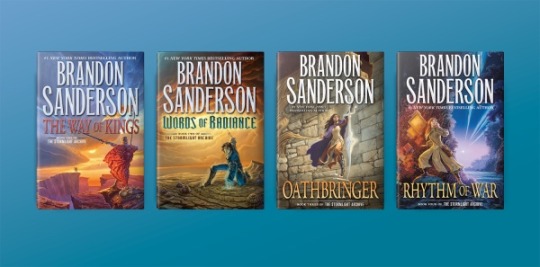
Status: ongoing, expected 10 books in total, 4/10 out at the moment
Book 1: The Way of Kings. The Way of Kings takes place on the world of Roshar, where war is constantly being waged on the Shattered Plains, and the Highprinces of Alethkar fight to avenge a king that died many moons ago.
2. The Craft Sequence by Max Gladstone

Status: finished, 6/6 books out.
Book 1 (in publication order): Three Parts Dead. Comprised of 6 standalone books set in the same universe, the Craft Sequence tells the tales of the city of Alt Coulumb. The city came out of the God Wars with one of its gods intact, Kos the Everburning. In return for the worship of his people, Kos provides heat and steam power to the citizens of Alt Coulumb; he is also the hub of a vast network of power relationships with other gods and god-like beings across the planet. Oh, and he has just died. If he isn’t revived in some form by the turn of the new moon, the city will descend into chaos and the finances of the globe will take a severe hit.
3. Hierarchy by James Islington

Status: ongoing, 1/3 planned books out
Book 1: The Will of the many. The Will of the Many tells the story of Vis, a young orphan who is adopted by one of the sociopolitical elites of the Hierarchy. Vis is tasked with entering a prestigious magical academy with one goal – ascend the ranks, figure out what the other major branches of the government are doing, and report back. However, that isn’t quite as easy as Vis or anyone else thought it was going to be…
4. Suneater by Christopher Ruocchio
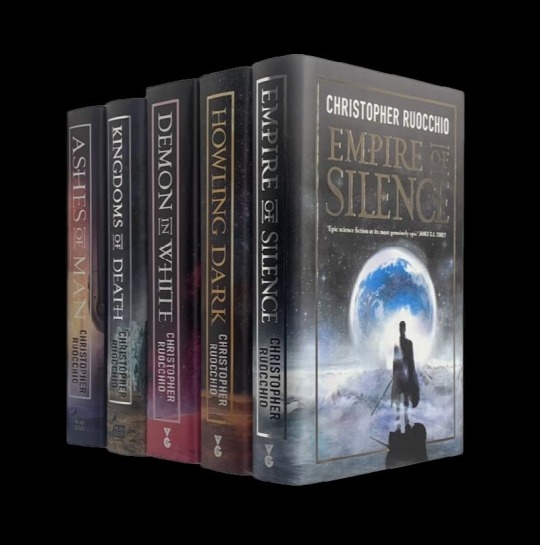
Status: ongoing, 5/7 books out
Book 1: Empire of Silence. Hadrian is a man doomed to universal infamy after ordering the destruction of a sun to commit an unforgivable act of genocide. Told as a chronicle written by an older Hadrian, Empire of Silence details his earlier adventures and serves as an introduction to the characters and the setting.
5. Dune by Frank Herbert
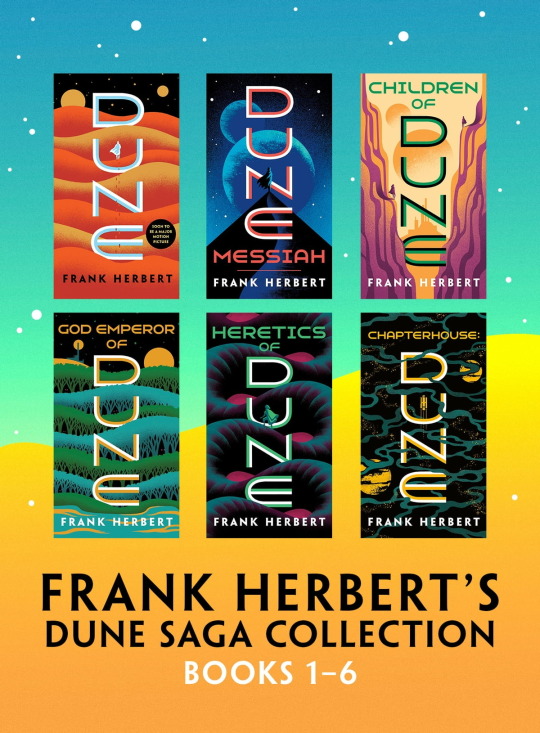
Status: completed, 6/6 books out
Book 1: Dune. Set in the distant future amidst a feudal interstellar society in which various noble houses control planetary fiefs. It tells the story of young Paul Atreides, whose family accepts the stewardship of the planet Arrakis. While the planet is an inhospitable and sparsely populated desert wasteland, it is the only source of melange, or "spice", a drug that extends life and enhances mental abilities.
6. The Expanse by James S A Corey
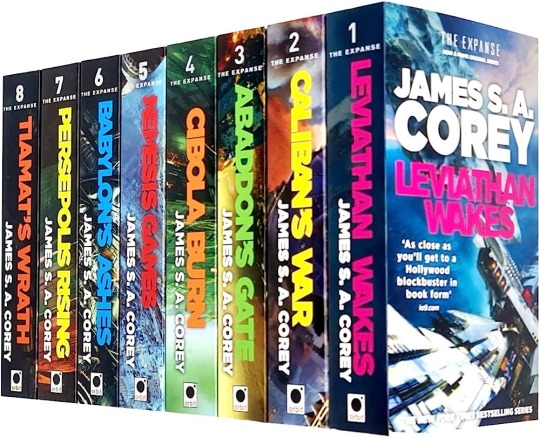
Status: completed, 9/9 books out
Book 1: Leviathan wakes. Set hundreds of years in the future, after mankind has colonized the solar system. A hardened detective and a rogue ship's captain come together for what starts as a missing young woman and evolves into a race across the solar system to expose the greatest conspiracy in human history.
7. The First Law by Joe Abercrombie

Status: completed. 3 books in the original trilogy + 3 standalone books + 3 books in the newest trilogy
Book 1: The Blade Itself. The story follows the fortunes and misfortunes of bad people who do the right thing, good people who do the wrong thing, stupid people who do the stupid thing and, well, pretty much any combination of the above. Survival is no mean feat, and at the end of the day, dumb luck might be more of an asset than any amount of planning, skill, or noble intention.
8. Cradle by Will Wight
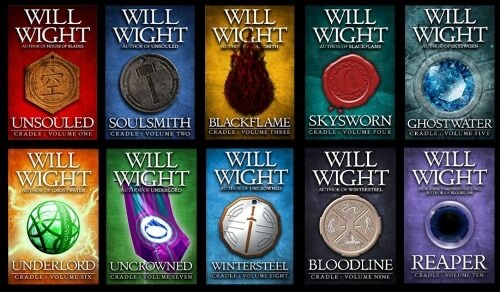
Status: completed, 12/12 books out
Book 1: Unsouled. Lindon is Unsouled, forbidden to learn the sacred arts of his clan. When faced with a looming fate he cannot ignore, he must rise beyond anything he's ever known...and forge his own Path
9. Hyperion Cantos by Dan Simmons (one PB’s favorites)
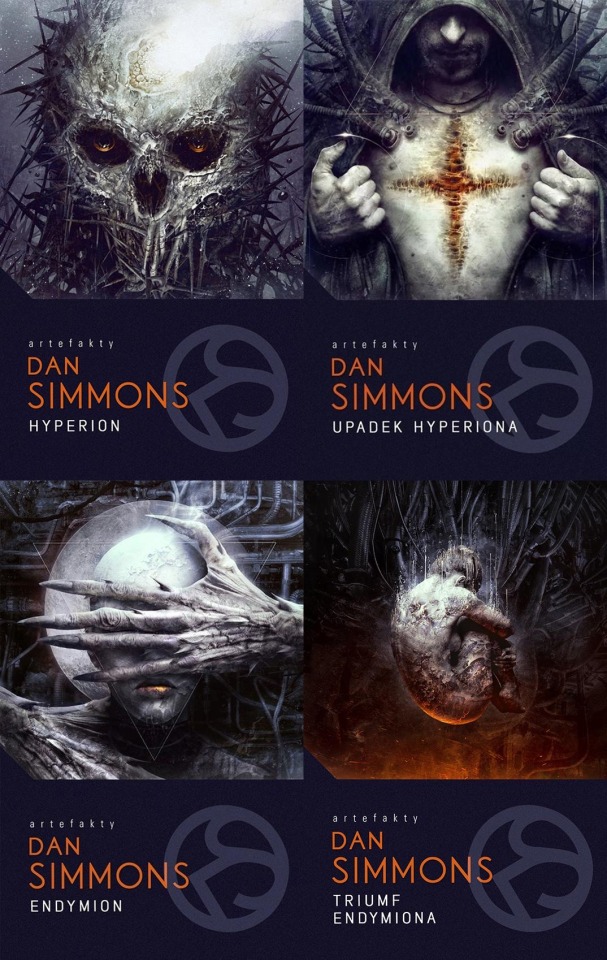
Status: completed, 4/4 books out
Book 1: Hyperion. The story weaves the interlocking tales of a diverse group of travelers sent on a pilgrimage to the Time Tombs on Hyperion. The travelers have been sent by the Church of the Final Atonement, alternately known as the Shrike Church, and the Hegemony (the government of the human star systems) to make a request of the Shrike. As they progress in their journey, each of the pilgrims tells their tale.
#red rising#golden son#morning star#pierce brown#dark age#iron gold#light bringer#what to read#book rec#book recommendation#books#stormlight archive#hyperion cantos#craft sequence#the expanse#hierarchy#the will of the many#first law#suneater#sun eater#dune#cradle series
759 notes
·
View notes
Text
My favorite thing about hetalia astrology is how you can kind of combine it with hetalia anatomy. I'm going to use America as an example. When Pluto entered Capricorn, causing America to experience its Pluto Return in 2008, the main place within his birth chart that got affected was his Second House, the place where his natal Pluto in Capricorn is stationed (aka the place where Pluto in Capricorn was in the sky when he declared Independence).
Now, planets, houses, and signs all govern over their respective body parts in astrology. Pluto governs over the reproductive system, the immune system, the bladder, colon, and bowels ( places that deal with elimination and purification, which is strongly tied to the themes of Pluto). Capricorn governs over the knees, the joints, the bones, and the skin. The 2nd house governs over the throat and the neck. So I imagine that when America experienced his Pluto return, he began dealing with thyroid disorders (2nd house affect), arthritis (Capricorn affect), and hormonal imbalances (Pluto affect) among other issues -perhaps common cold- which lasted for about 16 years and is soon going to come to an end. It's a fun thought to consider that the anatomy of nations isn't necessarily tied to the people or the land but the cosmos itself, which is tied to everything and everyone. Pluto entering Capricorn caused America's Pluto Return, which caused the Great Recession of 2008 that recked the global economy ( i guess you can take this as America accidentally spreading his cold, poor baby 😭😭😭). Pluto in Capricorn returned to the *exact* degree it was in during the declaration of Independence in 2022 (which irl dealt with issues with regards to reproductive health), and now it's slowly starting to recede.
France is getting ready to experience his own Pluto Return, and I imagine that illness is gaining speed and steadily descending on him like a Jaws theme 😭😭😭 it's like when your throat suddenly feels scratchy but you don't have the runny nose to go with it yet. For him, Pluto is in Aquarius in the 4th house, and Pluto is getting ready to enter Aquarius this November (the place it was over 200 years ago when the First French Republic was established during the throes of the French Revolution). So he'll be dealing with immune and reproductive system illnesses, like America, as well as issues with his calves, shins, and ankles (Aquarius) and his chest, lungs, and stomach (4th house).
Keep in mind, though, that these planetary returns aren't constantly hitting them. Pluto takes about 248 years to return to the original place it was in their birth charts, Uranus takes 84 years, and Saturn takes 29. So these are like once in a lifetime illnesses or conflicts that take them by suprise, lingering for a bit before disappearing for another couple of centuries or decades. They learn how to heal themselves better, whether that be literally or metaphorically (or like in a metaphysical sense), and they learn life lessons that braids itself into the fabric of their societies, cultures, history etc. So it sucks for a bit, but it makes them stronger after all is said and done.
#hetalia astrology#hetalia#hetalia meta#aph france#aph america#alfred f jones#francis bonnefoy#a nation is a god verse
60 notes
·
View notes